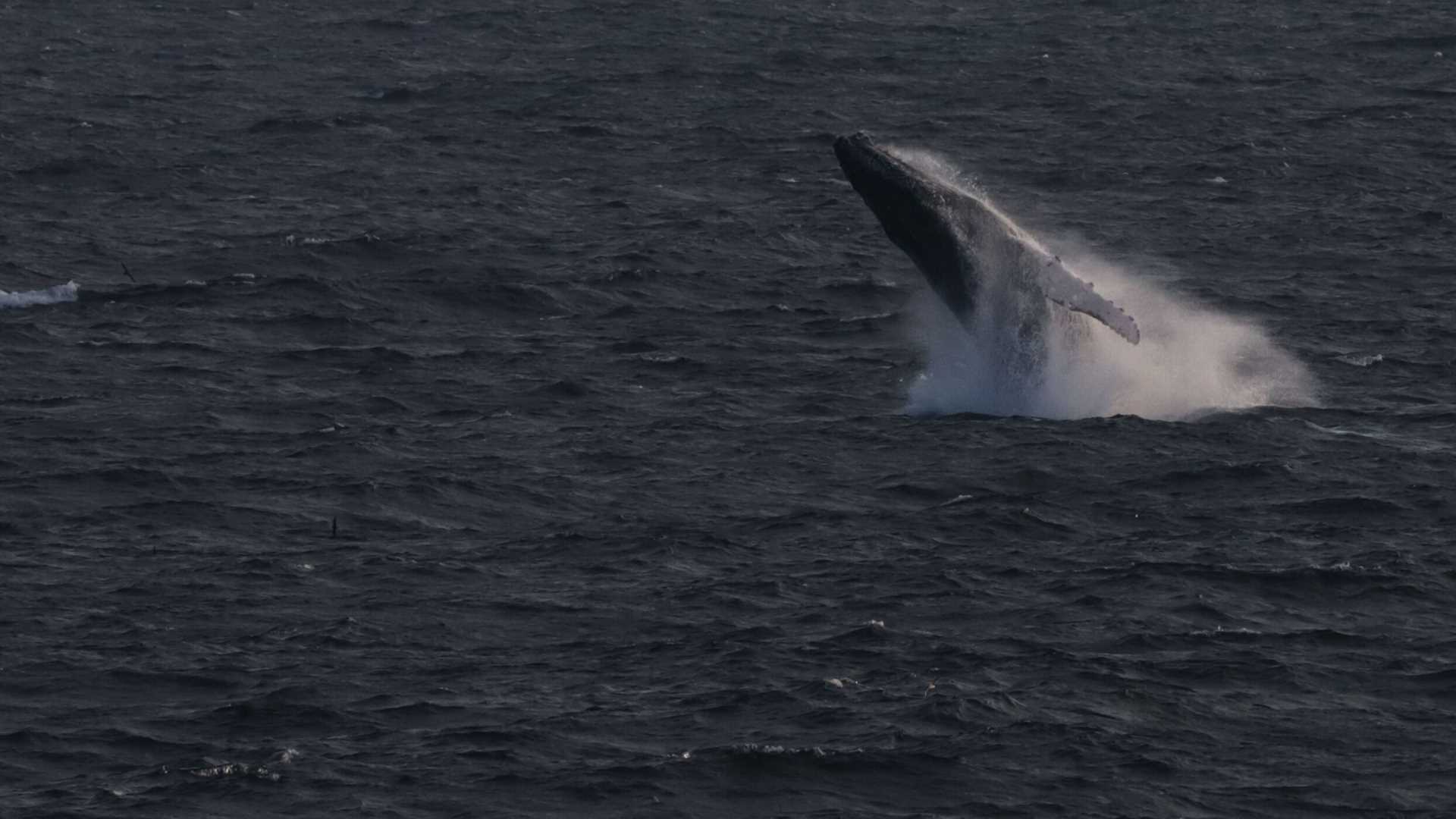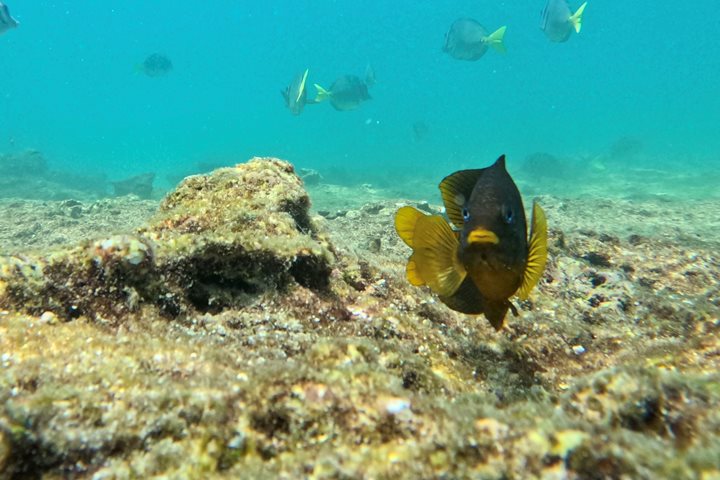On the last day of our expedition aboard National Geographic Islander II, our exploration led us to captivating Genovesa Island. Genovesa is often referred to as "Bird Island" due to the remarkable abundance of avian species. Our day was marked by immersive encounters with unique wildlife and dramatic volcanic landscapes, and we left with a deeper understanding of the island's ecological significance.
Our day began with a Zodiac ride to Darwin Bay, a stunning, horseshoe-shaped bay bordered by towering cliffs and pristine white sands. Stepping ashore, we were greeted by a symphony of birdcalls. Nazca and red-footed boobies soared above while frigatebirds circled the skies, their distinctive silhouettes a testament to their mastery of the air.
A leisurely hike along the sandy trails brought us in close proximity to the island's inhabitants. Marine iguanas basked in the sun, seemingly undisturbed by our presence, while swallow-tailed gulls and lava gulls perched on the rocks, offering us photo opportunities against the backdrop of azure waters. After the walk, we had the chance to enjoy snorkeling and kayaking.
In the afternoon, we ventured to El Barranco, also known as Prince Philip's Steps. This dramatic, cliffside location showcases the island's unique geological formations. A challenging hike led us through a seabird colony, where masked boobies and storm petrels nested in the crevices of the rocky terrain. Breathtaking views from the top of the cliffs provided a glimpse into the island's volcanic origins and the vast expanse of the surrounding ocean.
As the sun began to set, we were treated to a remarkable sight—swooping frigatebirds returning to their nests, silhouetted against the crimson hues of the sky. The serene beauty of this moment was a fitting end to our exploration of Genovesa Island, a place where the cycles of life and nature unfold in harmony.







